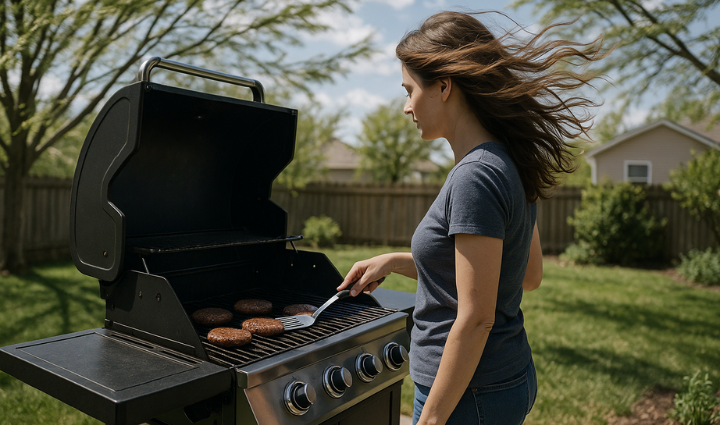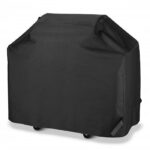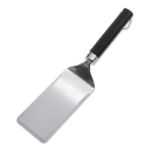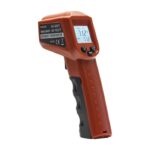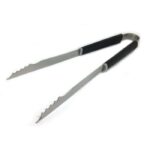Windy conditions can definitely complicate your grilling plans, but they don’t have to shut them down. With a few smart adjustments and safety strategies, you can keep grilling even when the forecast calls for gusts.
Let’s get started.
Know When It’s Too Windy to Grill
A light breeze won’t derail your dinner plans, but once wind speeds hit 25 mph (40 km/h) or more, it’s time to pause and assess. Strong gusts can scatter hot coals, blow out gas burners, and send embers flying into flammable areas. If the wind is toppling patio furniture or shaking your grill cover loose, it’s probably too risky to light up.
Charcoal grills are especially vulnerable in high winds. Lightweight coals can be tossed around easily, making it difficult to maintain steady heat. And gas grills aren’t immune either—even with the lid closed, wind can cause a burner blowout by extinguishing the flame without shutting off the gas. This creates a serious safety hazard if left unaddressed.
So, how do you know when to grill and when to wait?
Start by checking the wind speed. If it’s over 25 mph (or 40 km/h), consider rescheduling. If conditions are breezy but manageable, take extra precautions: use a grill with a wind-resistant design, anchor it securely, and choose a sheltered location.
Choose the Right Grill Setup
Gas and charcoal grills are the go-to choice for most backyard cooks, but they require careful setup in windy conditions. Stability is key:
- Make sure your grill is placed on level ground and securely anchored to prevent tipping.
- Avoid positioning it in high-traffic areas or open, elevated spots like hilltops or unprotected decks. Instead, look for a leeward location, such as the sheltered side of your house, garage, or a solid fence.
To reduce wind interference, consider adding wind protection around your setup:
- Temporary windbreaks: Use non-flammable materials like metal panels, cinder blocks, or heavy planters to block gusts. Position them a safe distance from the grill to allow for proper airflow and smoke ventilation. Avoid using tarps, fabric screens, or wooden boards, which can pose a fire risk.
- Permanent wind barriers: If your grilling area is frequently exposed to wind, consider installing a built-in solution. A brick or stone grill enclosure, a masonry wall, or a recessed cooking nook can provide long-term wind protection while enhancing the safety and aesthetics of your outdoor space.
You can also consider other types of grills. Kamado-style grills, such as the Big Green Egg or Kamado Joe, are naturally wind-resistant thanks to their heavy ceramic bodies and tight-fitting lids. Their bottom-up airflow systems help maintain steady cooking temperatures, even when the breeze picks up.
Pellet grills are another solid option. With automatic feeding systems, digital temperature controls, and enclosed flame boxes, they’re less prone to flare-ups and burner blowouts caused by wind.
Whether you’re using a gas or charcoal grill on a windy day, a solid setup in the right location makes all the difference.
Need help reinforcing your setup? Explore our selection of grill replacement parts and pellet grill accessories to keep your equipment ready for action.
Take Smart Safety Precautions
Grilling in the wind calls for extra vigilance, and if something does go wrong, you want to be able to act quickly.
- Keep a fire extinguisher or a bucket of sand within easy reach.
- Before you even light your grill, inspect your surroundings. Remove flammable materials, such as dry leaves, paper, patio cushions, or low-hanging tree branches that could catch a stray ember.
And most importantly, never leave your grill unattended. Windy conditions can change in an instant, a stable flame can suddenly flare up, and a strong gust could knock over cooking tools (or even the grill itself) if it’s not adequately secured. Always stay nearby and keep kids and pets at a safe distance.
Consider placing a grill mat or heat-resistant pad underneath your grill, especially if you’re cooking on a wooden deck. These can help catch sparks or hot debris that might otherwise pose a fire risk.
Wind-Proofing Techniques That Work
A few strategic moves can make a big difference when grilling in the wind. Here’s how to reduce gust interference and keep your cook on track:
- Use a non-flammable windbreak: Brick walls, metal screens, concrete blocks, or heavy planters can help shield your grill from direct wind. Just be sure to leave enough space for proper airflow and smoke ventilation.
- Avoid flammable materials: Steer clear of wooden fences, fabric tarps, or plastic panels as makeshift wind barriers. These can create fire hazards.
- Position your grill strategically: Set up your grill so the lid opens away from the wind. This helps trap heat inside and prevents gusts from disrupting your flame or causing flare-ups.
- Shield gas burners: Line the sides of your cookbox with foil or use angled metal plates to help protect burner flames from being blown out. If a blowout does occur, turn off the gas, wait a few minutes, and then relight according to the manufacturer’s instructions.
- Build a deep coal bed: For charcoal grills, a deep bed of hot coals provides more stable heat that’s harder for the wind to disrupt.
- Use a chimney starter: This tool lights coals quickly and evenly without lighter fluid, which can behave unpredictably in breezy conditions.
These quick adjustments help keep your fire steady and your food cooking evenly when the wind kicks up.
Mastering Temperature Control in Windy Conditions
Wind can throw off your barbecue temperature. Here’s how to keep the temperature steady when you’re grilling in the wind:
- Preheat longer than usual: Compensate for wind-related heat loss by giving your grill extra time to warm up.
- Choose thicker cuts: Thicker meats like bone-in chicken, steaks, or pork chops handle temperature swings better than thin cuts like shrimp or hot dogs.
- Keep the lid closed: Minimize how often you open the lid to prevent heat loss and reduce flare-ups.
- Use a meat thermometer: Check doneness without repeatedly opening the lid.
- Use heavy-duty tools: Long-handled tongs and spatulas help you maintain control in gusty conditions.
- Light it right: A wind-resistant lighter or ignition system makes startup safer and easier.
Post-Grill Cleanup and Safety Check
After you’ve wrapped up the cookout, give your grill a few extra minutes of attention. If you’re using a charcoal or pellet grill, let any charcoals or ash cool completely before disposing of them in a metal container. Hot embers can smolder unnoticed and catch in the breeze if discarded too soon.
Before you start grilling, take a moment to survey your grilling area. Check for any embers, grease drips, or debris that could become a fire hazard, as wind can easily scatter smoldering materials that can go unnoticed. Additionally, wipe down the grill itself. Wind can blow leaves and dust into vents and burners, potentially affecting both performance and safety over time.
If you store your grill outside, make sure your grill cover is securely fastened. And if you’re unsure how to secure the grill cover against the wind, try using bungee cords, Velcro straps, or heavy-duty clips to hold it tightly against the grill frame.
Windy Day? You’ve Got This
Wind doesn’t have to ruin your BBQ plans. With the proper preparation and a few adjustments, you can keep grilling safely, even when Mother Nature throws a curveball.

